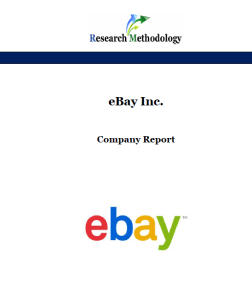Posts Tagged ‘e-commerce’

eBay leadership at the most senior position has been assumed by only four people since its establishment in 1995 by 28-year-old Pierre Omidyar. By June 1996 the company had USD10,000 in monthly revenues and its first employee and it secured a multi-million dollar round of venture capital funding the next year.[1] Aware of his entrepreneurial and leadership limits, Omidyar brought in Meg Whitman who oversaw IPO, international expansion, numerous acquisitions including PayPal, and several well-publicized site crashes. Meg Whitman stepped down as eBay CEO and President to run for the office of the Governor of California in 2008 and eBay leadership was assumed by John Donahoe. During the times he was in charge, Donahoe was seen as effective leader and turnaround manager. He was against the split of PayPal from eBay and unable to prevent the split, Donahoe had to step down on July 2015. It has been noted that “the changes implemented during John Donahoe’s tenure have proven to be controversial as shifts in rules and fees structures and an increased orientation toward high-volume, fixed-price retail channel selling have alienated portions of eBay’s traditional community even as the competitive landscape around eBay stiffens”[2] Today, Devin Wenig is the President and CEO of eBay Inc. and the executive leadership team comprises 13 members. There are 11 members in the Board of Directors comprises 11 members, including eBay founder Pierre Omidyar. The role of the Chairman of the Board is currently held by Thomas J. Tierney. Currently, eBay leadership is faced with a challenge of declining business growth. During 2015 – 2016 holiday season “sales grew an estimated 4.8 percent, which is way below the 13.3 percent typical for ecommerce companies”[3] The leadership of Devin Wenig can be criticized for the lack of clear strategy and competitive advantage for eBay. Plans…

eBay has been continuously reinventing itself since its founding in 1995 and its strategy places a great emphasis on the first mover advantage. eBay business strategy can be described as service differentiation with the focus on user experience of both, buyers and sellers. Specifically, the most recent changes include “improving the site’s search capabilities making finding items more structured. Instead of listing all available items when a product is searched, there will now be categories such as “best value,” “brand new” and others.”[1] Generally, for the past few years eBay business strategy has been marked with a shift from a listings-based format toward a product-based format. The pursuit of this business strategy has involved a collection of product-related data from sellers to enhance user experience with the ultimate aim of building machine learning capabilities to process a global, accessible catalogue of things. In other words, eBay business strategy is attempting to shift the role and image of the company from e-commerce facilitator to an online retailer. While this decision by CEO and President Devin Wenig may reflect the overall tendency in the global market, eBay may find it increasingly difficult to compete with Amazon, taking into account Amazon’s high level of cost-effectiveness and competence in the delivery of goods. eBay business strategy for a medium term perspective also includes improving its ranking in Google search results via employing a structured data. It is important to note that the business strategy of service differentiation requires systematic financial investments in research and development. From this point of view, it can be argued that eBay may find it difficult to pursue this strategy in the future, since after the separation from PayPal in 2015, eBay lost a solid source of cash flow and a powerful growth engine. eBay Inc. Report contains more detailed…

eBay Inc. is a US-based e-commerce company and global corporation that provides consumer-to-consumer and business-to-consumer online sales platform. Founded in 1995 by Pierre Omidyar, nowadays eBay employs nearly 12,000 people worldwide, including 6200 employees in the USA. More than 160 million people buy from eBay annually and the company generated the revenues of more than USD 8.6 billion in 2015 alone. eBay’s mission statement is ‘to be the world’s favourite destination for discovering great value and unique selection’. eBay business strategy focuses on benefiting from the first mover advantage via introducing innovative services and regularly adding new features and capabilities to existing services with the aim of enhancing user experience. The senior management led by CEO and President Devin Wenig has made a strategic decision to transfer the business from an online auction to become the largest online retailer, an area which is currently dominated by Amazon. The e-commerce company has certain weaknesses that include dependence of the business on a range of products and services controlled by competitors such as Google, an overall complexity of the business model and an absence of eBay’s own distribution network to compete with Amazon. eBay Inc. Report contains the application of the major analytical strategic frameworks in business studies such as SWOT, PESTEL, Porter’s Five Forces, Value Chain analysis and McKinsey 7S Model on eBay. Moreover, the report contains analyses of eBay’s business strategy, leadership and organizational structure and its marketing strategy. The report also discusses the issues of corporate social responsibility. 1. Introduction 2. Business Strategy 3. Leadership 4. Organizational Structure 5. SWOT Analysis 5.1 Strengths 5.2 Weaknesses 5.3 Opportunities 5.4 Threats 6. PESTEL Analysis 6.1 Political Factors 6.2 Economic Factors 6.3 Social Factors 6.4 Technological Factors 6.5 Environmental Factors 6.6 Legal Factors 7. Marketing Strategy 7.1 7Ps of Marketing 7.2 Segmentation,…
